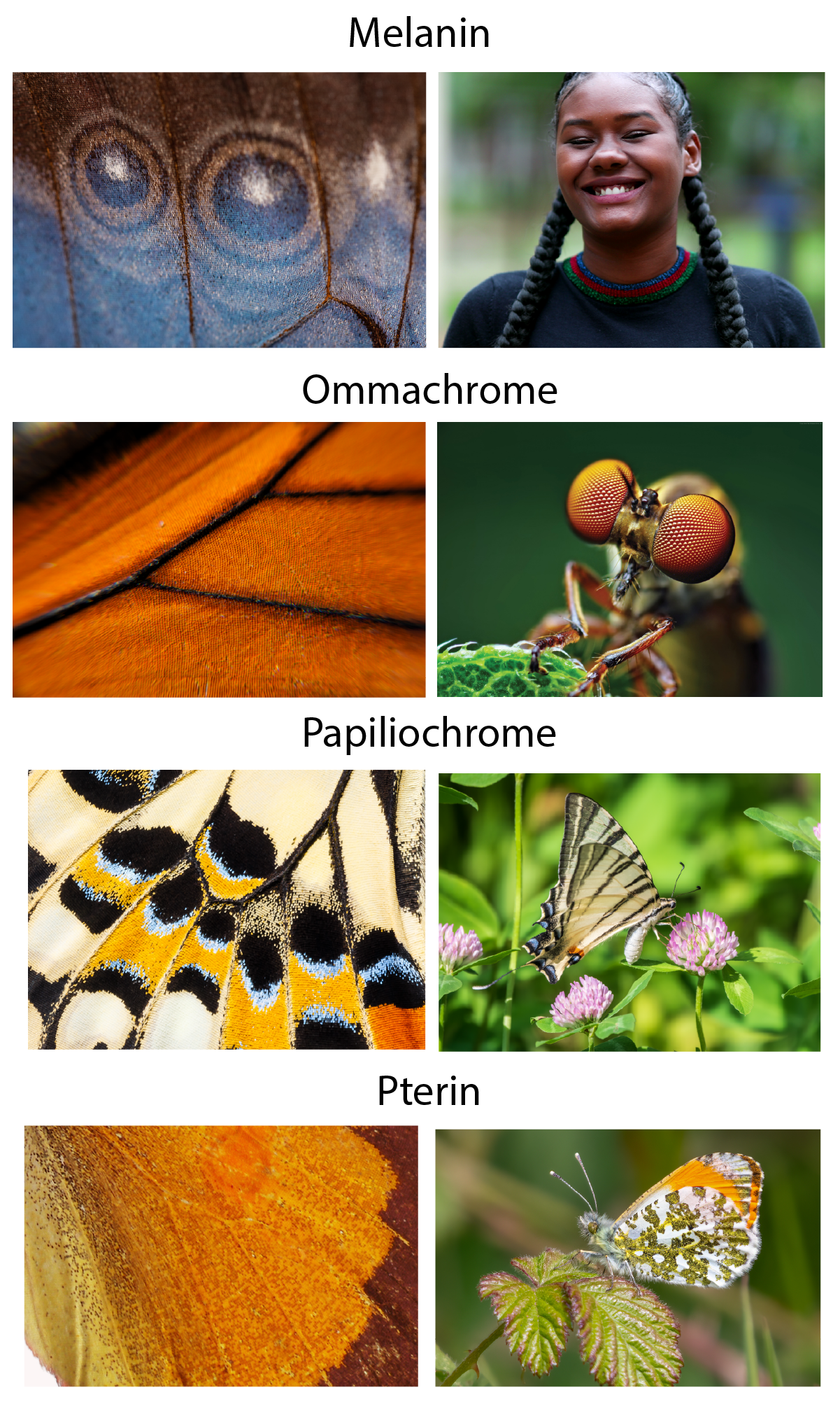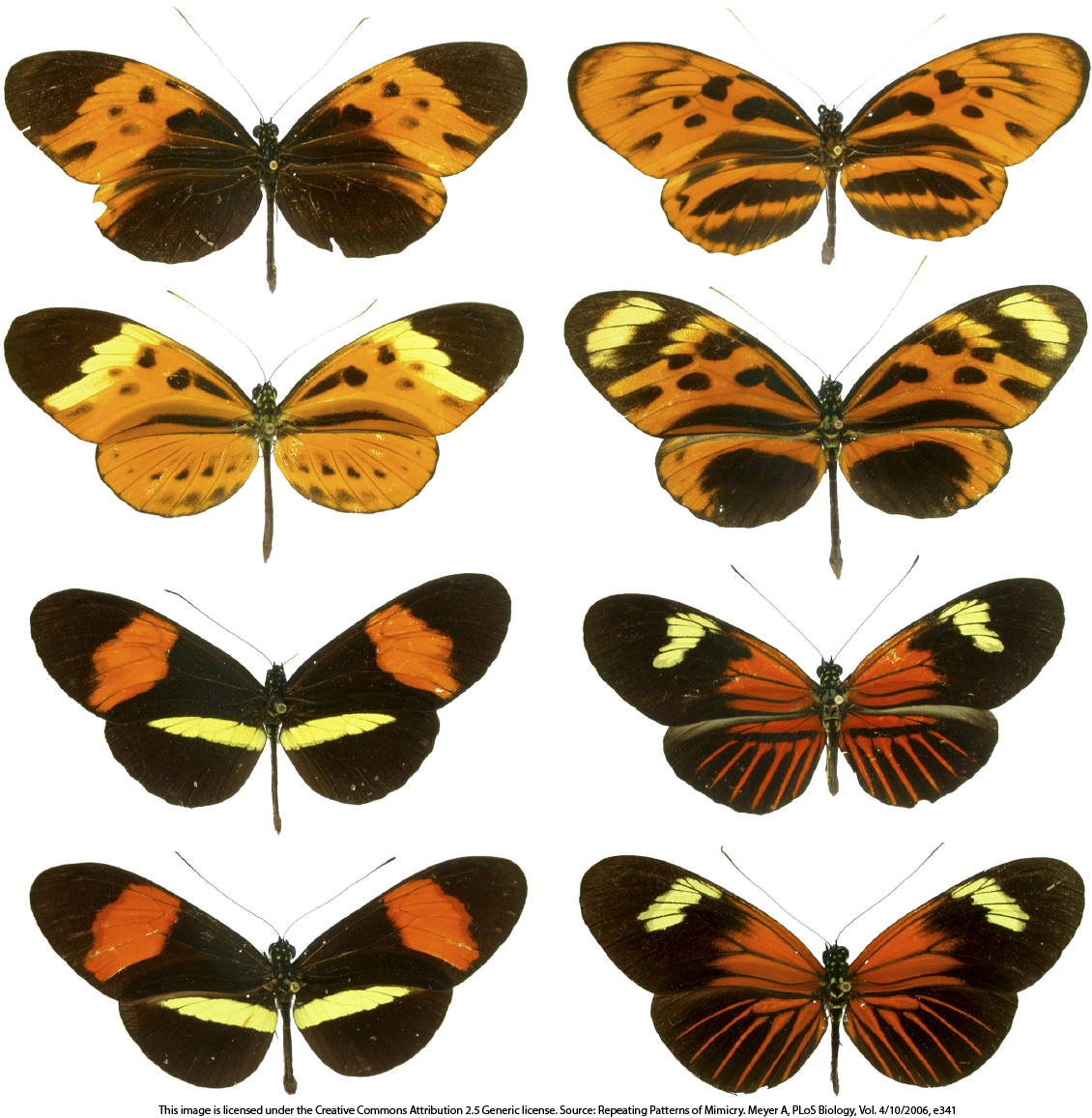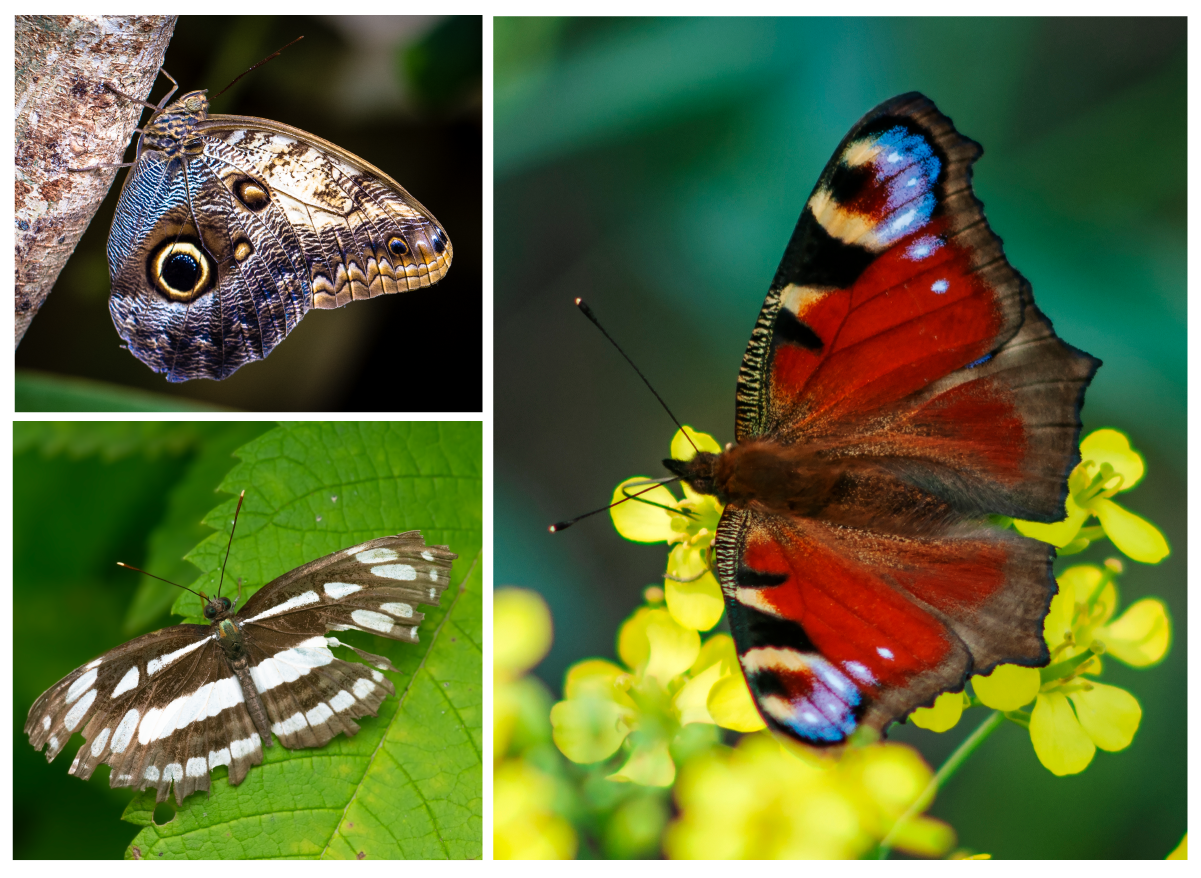Butterfly wings come in an amazing assortment of colors and patterns. Aside from being beautiful, they also serve a purpose. They can help butterflies find a mate, blend in with their surroundings, or absorb heat. In toxic species, bright colors warn predators to stay away. Read on to learn what makes these colors and what genes have to do with it.
The Genetics of Butterfly Colors
Wing Colors

Butterfly wings are covered in tiny scales, each with a specific shape and color.
The colors in butterfly wings can come from either colored pigments or structural color. Or even a combination of the two.
Colored pigments work the way you’re probably used to thinking about. Like the pigments in crayons or colored pencils, the molecules themselves have a certain color. Or rather they absorb most colors of light but reflect others, and we perceive the reflected light as color. The table below lists some of the common pigment types that butterflies make. In varying amounts or densities, each of these pigment types can make colors that are more or less intense.
Blues come from structural pigments. The molecules themselves are black, not blue. But their shape at the microscopic level makes them reflect blue light. This gives them an iridescent or metallic quality. Depending on the angle and intensity of the light, they can look black or bright blue. White is another structural color in butterflies. Usually it comes from microscopic air bubbles that reflect light. Structural color is also common in bird feathers.
All these pigments and structures are built by proteins. Groups of proteins work like assembly lines, turning raw materials into richly colored molecules. The instructions for making the proteins are coded in genes. Differences in genes can cause differences in proteins. And these differences can affect the qualities of a pigment that the protein helps to build, like its color or intensity.
Common Pigment Types in Butterfly Wings
| Pigment Type | Color(s) | More Information |
|---|---|---|
| Melanin | grey, black, brown | These pigments are common in many animals, where they color hair, fur, feathers, and skin. In butterflies, they can help absorb heat from sunlight. |
| Ommachrome | red, orange, tan | These pigments are common in insects. Outside of butterflies, they usually color eyes. |
| Papiliochrome | yellow, creme | Some of these pigments also make patterns in the ultraviolet light range. These patterns are visible to butterflies but not to humans. |
| Pterin | orange | Butterflies in the Pierid family use these pigments, rather than ommachromes, to make oranges. |

Wing Patterns
Some genes act like sort of paintbrushes to apply colors to different parts of the wing.
Within each butterfly family (there are 3 major ones), all the species use the same basic set of genes to build pigments. Another set of genes controls where these pigment-making assembly lines (or pathways) are active. They can switch entire pathways on or off. Different alleles of these “control genes” can cause pigments to be made in different places on the wing.
Small changes to when and where these control genes are active can produce dramatic differences. In fact, the broad diversity in butterfly wing colors and patterns comes from differences in a surprisingly small number of genes.

Variations in just a handful of genes can produce varied wing patterns, like the ones in these butterflies from the Heliconius genus. This image is licensed under the Creative Commons Attribution 2.5 Generic license. Source: Repeating Patterns of Mimicry. Meyer A, PLoS Biology, Vol. 4/10/2006, e341
A Few Genes With Big Effects

The Nymphalid butterfly family is known for its bright colors and diverse patterns. Scientists studying these species have found that much of their diversity comes from differences in just four genes.
Optix is known for producing large spots of colors and long, thin ray patterns. This gene works like a control switch to affect multiple pigment production pathways at once. In places where optix is active, ommachrome (red, orange, and tan) production is switched on and melanin production (black and grey) is switched off. In some species, optix is also involved in structural blue color, which is built from black melanin pigments.
Cortex affects black pigment patterns in some species, and white and yellow in others. It may work by affecting how quickly the cells that make scales mature. Black scales usually mature more slowly than others.
Aristaless affects switching between yellow and white patterns. It often produces bands on the forewings and hindwings, or spots on the bottom edge of the hindwing.
WntA fine-tunes the size and shape of spots and stripes that are laid down by optix and cortex.
Some butterfly species are known for their brilliant eyespots. These colorful targets can either scare predators or draw their attention away from vital organs. Two genes, spalt and distalless, are active in the centers of many eyespots.
Other butterfly families use different sets of control genes—but in a similar way. Genes like the ones described here allow for great flexibility and rapid shifts within species. For its patterns to shift, a population doesn’t need new color-building or pattern-making genes to arise from scratch. Instead, small changes to existing genes can make new patterns with nearly endless variations.
References
Monteiro, A. (2015). Origin, development, and evolution of butterfly eyespots. Annual review of entomology, 60, 253-271.
Nadeau, N. J. (2016). Genes controlling mimetic colour pattern variation in butterflies. Current Opinion in Insect Science, 17, 24-31.
Nadeau, N. J., Pardo-Diaz, C., Whibley, A., Supple, M. A., Saenko, S. V., Wallbank, R. W., ... & Jiggins, C. D. (2016). The gene cortex controls mimicry and crypsis in butterflies and moths. Nature, 534(7605), 106-110.
Wallbank, R. W., Baxter, S. W., Pardo-Diaz, C., Hanly, J. J., Martin, S. H., Mallet, J., ... & Jiggins, C. D. (2016). Evolutionary novelty in a butterfly wing pattern through enhancer shuffling. PLoS biology, 14(1), e1002353.
Westerman, E. L., VanKuren, N. W., Massardo, D., Tenger-Trolander, A., Zhang, W., Hill, R. I., ... & Kronforst, M. R. (2018). Aristaless controls butterfly wing color variation used in mimicry and mate choice. Current Biology, 28(21), 3469-3474.
Zhang, L., Mazo-Vargas, A., & Reed, R. D. (2017). Single master regulatory gene coordinates the evolution and development of butterfly color and iridescence. Proceedings of the National Academy of Sciences, 114(40), 10707-10712.